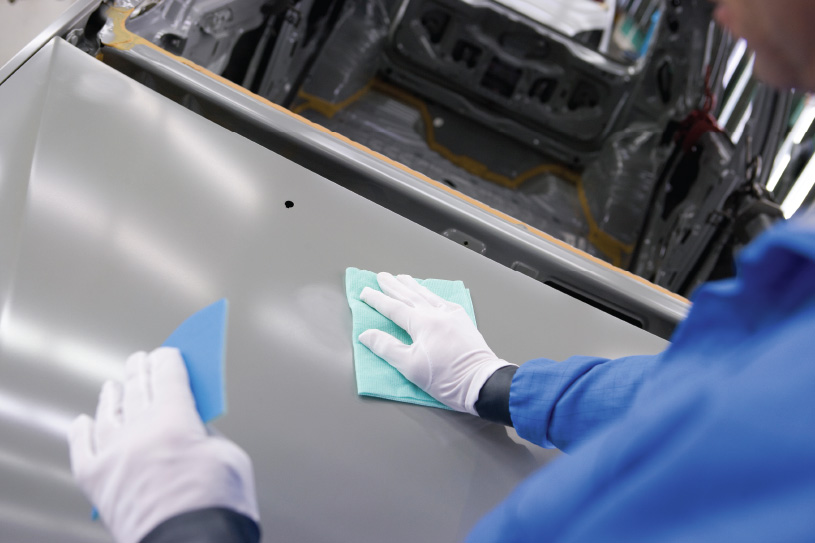It’s All in the Wipe

In a series of conversations with Richard Mallett, Managing Director of the European division of HACCP International, we’ve been exploring the common threats of an improperly cleaned industrial kitchen, and offered tips and advice for ensuring the health and safety of customers and staff. From disinfection to colour-coding to the most common types of kitchen bacteria, we’ve explored many facets of the issue, and offered standards that the food industry can trust.
Now, we discuss with Richard the importance of using the right kind of cleaning cloth to ensure a ‘microbiologically clean’ kitchen. And when it comes to the health of your customers, it’s not enough to have a clean-looking surface. That surface must also be free of harmful viruses and bacteria. The right cloth is a big step in the right direction.
The cotton threat An alarming number of industrial kitchens still use cotton cloths to clean their kitchen surfaces. But the woven fibre composition of a cotton cloth is a hotbed for bacterial retention and growth. Bacteria need moisture, warmth and food particles in order to thrive, and a dirty common cotton towel provides all three.
After one use, cotton towels retain moisture and food particles, and can take hours to dry. When left lying on the counter or next to the sink, the warmth of the kitchen provides the last necessary ingredient to cause explosive bacterial growth. Bacteria can divide and grow in as little as ten minutes if conditions are right. In less than 90 minutes, one thousand bacteria cells can become one million – and they’ll continue to grow. In fact, it’s not uncommon to find as many as one billion bacterial cells in one square centimetre of cotton cloth!
The danger spreads
Now imagine that bacteria-infested cloth, with one billion microbes on each square centimetre, being used to wipe off a knife, dry a plate, or clean a cutting board. Next, that knife cuts a sandwich and is placed on the plate. It’s a recipe for disaster. Especially if your kitchen produces large quantities of food in short amounts of time.
It’s easy to see how quickly bacteria can spread from the cloth, to a food contact surface, and into the food. The next thing you know, you’ve got very sick customers on your hands. In the same way you’d never give your customers a cup full of bacterial cultures, you must also always be sure that every surface and tool in your kitchen is free of harmful bacteria.
Stopping the spread
HACCP International recommends effective, single-use, non-woven cloths for cleaning kitchen surfaces. Cleaning cloths that resist bacterial growth and dry quickly are also highly recommended. And of course, colour-coding your cleaning materials to prevent cross contamination is also important. Do not use the same cloth to clean raw food preparation areas as you do to clean other food preparation or food storage surfaces. Pair the right cloths with the right chemicals. Be sure to use disinfectants and sanitizers properly – and often.
Keeping your customers healthy and happy is not rocket science. It’s simply about following the standards and guidelines demanded by HACCP and by regulation. And the importance is clear: your customers depend on it.
For more information, visit www.haccpeurope.com

